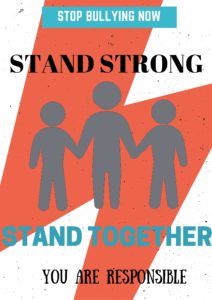In Is There a Family? New Anthropological Views, Jane Collier, Michelle Z. Rosaldo, and Sylvia Yanagisako discuss “what families ‘really’ are like” (Collier et al, 31). The authors first reference Bronislaw Malinowski, an anthropologist who published The Family among the Australian Aborigines in 1913. In this work, Malinowski disproved the idea that the Australian Aborigines and other “primitives” were incapable of having families as a result of their sexual promiscuity (Collier et al, 32-33). The advocates of social evolution thought that this would cause children to not be able to distinguish their fathers from other men. However, Malinowski showed that the aborigines “had rules regulating who might have intercourse with whom during sexual orgies” and “also differentiated between legal marriages and casual unions” (Collier et al, 32). In fact, children were able to recognize their fathers because each mother had a single husband, regardless of how many wives each husband had.
Malinowski therefore felt that sexual promiscuity did not affect the existence of a family, and that families were necessary for the human need of child rearing, a need that he regarded as universal (Collier et al, 32). He established three aspects that were necessary of a family as a result of this universal need: 1) families needed to be a group of people that were distinguishable from outsiders, 2) families had to have a “home” or a physical space that family-focused tasks could take place, and 3) family members felt a certain set of affectionate and loving emotions not felt for others (Collier et al, 33). However, other anthropologists challenged aspects of Malinowski’s claims about families.
First of all, some anthropologists disagreed with Malinowski’s argument that families were the result of the need for child rearing. “[B]ecause a social institution is observed to perform a certain necessary function does not mean either that the function would not be performed if the institution did not exist or that the function is responsible for the existence of the institution” (Collier et al, 34). Furthermore, later anthropologies disagreed with Malinowski’s idea that families always include a father; however, these same anthropologies regarded a mother and her children as a family. Other anthropologies pointed out that many languages do not have a word like the English word “family” for a parents-and-children unit (Collier et al, 35). Also, some anthropologists recognized that some “families” lacked physical spaces as homes, such as the Mundurucu of South America who have men sleep in different areas than women and children (Collier et al, 35). Finally, it was refuted that family members need to “love” each other, with examples being modern Zambia and the Cheyenne Indians.
Collier et al acknowledge that Victorian-period evolutionists were at least right in understanding that The Family is affected by society and culture; The Family is not single fixed notion. The authors state that they “understood, as we do not today, that families – like religions, economies, governments, or courts of law – are not unchanging but the product of various social forms, that the relationships of spouses and parents to their young are apt to be different things in different social orders” (Collier et al, 38). Therefore, Collier et al argue that this “ideological construct” can be molded by what we believe we want and need The Family to be (Collier et al, 45).
In regards to applying this piece by Collier et al to a contemporary news story, one can use the various viewpoints of family as an analytical tool to examine LGBT rights and issues. Last March, a story of Boise, Idaho couple Lori and Teresa Burke-Ellet was produced in light of the discussions by the Supreme Court regarding the same-sex marriage ban in California that same week. The article stated that Lori and Teresa have a 4-year-old son, David, and have been together for 10 years (KBOI2.com). Though they had a church wedding and have a civil-union, the couple wants same-sex marriage to be legalized federally. Lori Burke-Ellet stated, “[f]or us it’s making a statement that we are a legitimate family.” The topic of same-sex marriage is a very prominent debate in recent years, with arguments against it ranging from it being “bad for children” to the argument that marriage is “only between a man and a woman.” Drawing from perspectives in Collier et al, one could argue that if a family’s purpose is to nurture children, and if a father is not necessary to make a family, then having two mothers cannot be “bad for” the Burke-Ellet’s son. Therefore, why is a family with two mothers not legally recognized? (Of course, I feel that a family with two fathers should be legally recognized as well; this is only an analytical example.) Ultimately, one could analyze the relationship between LGBT rights and the notion of family through the concluding statements of Collier et al: “family,” and in this case “marriage,” are what Collier et al call “ideological constructs,” meaning that they are developed by society and culture and are not actually set in stone. Understanding this and using it to analyze the article, it is perfectly rational for the Bruke-Ellets (and other same-sex couples) to desire a legally-recognized marriage. Therefore, it is not that same-sex marriage would be “bad for children” or “can only be between a man and a woman.” That is simply what some people have said it is; it is up to our society as a whole to decide what The Family and A Marriage mean, and we must recognize that these definitions can – and will – change over time.
Looking back in history, it was not uncommon for politically-powerful men to have more than one “wife.” Today, marriage as understood by some religions (such as Mormonism) can involve more than one wife. Furthermore, some countries already give freedom to marry to same-sex couples, including The Netherlands, Belgium, Spain, and Canada. In each of these cases, as well as in the case of the Australian Aborigines, a family does not mean simply one man and one woman with children. Families can come in all forms and sizes: two moms and children, two dads and children, a couple without children, a single parent with children… The list goes on and on. These differences are not necessarily “bad for children and human reproduction.” Based on the arguments by Collier et al, we will someday see same-sex marriage be federally recognized in the United States, and the Bruke-Ellets will finally be a legally “legitimate family.”
Check out the article here: http://www.kboi2.com/news/local/Same-sex-couple-We-are-a-legitimate-family-200167481.html
-Aly Schmidt


Recent Comments